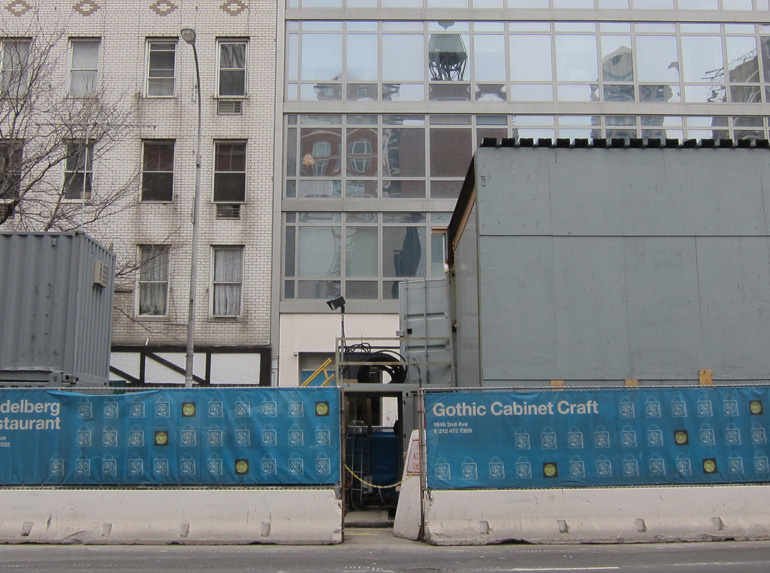Gotham Diary:
Photography and Accident
15 January 2013
When I was young, I thought that the Nineteenth Century must have been the very worst time in human history to be alive. I was brought to this conclusion by photographs, by the pictures that were taken of nineteenth-century people. Faces were either stern or inexpressive. Hair looked dirty generally; men’s hair was often a frightful mess — and those untrimmed beards! Everyone seemed to be wearing too much clothing, too much fabric that managed to be stiff and rumpled at the same time. The overall effect was infernally dismal.
There were no photographs of the people of earlier times, of course; instead, there was a very wide range of painted portraits. Each period had a definite style, but at least the rich and powerful people who sat to the most skilled artists looked lively and interesting. (Or appealingly wicked — van Dyke’s Richelieu, for example.) The light seemed to have gone out of life in about 1850, when photography began to be common. By intriguing coincidence, this is about when Queen Victoria lost her girlish charm. As a young woman, she was often painted in a way that brought out her youthful warmth. As a middle-aged woman, almost immediately a widow, Victoria was a monument to loss. The century’s other great figure, Abraham Lincoln, was equally rebarbative.
It was only a few years ago that I saw what the problem really was, an aspect of photography that hadn’t occurred to me. Oh, I had long known that early sitters had to hold their poses for aching stretches of time. That accounted for the frowns and the blank stares. But it didn’t explain everything, certainly not the clothes. Everyone seemed to be wearing a sofa!
One day, at the Museum, I was looking at Nadar’s portrait of Rossini, taken in 1856. It took a moment for me to correct the impression than Rossini had spilled soup on his coat; in fact, the print was damaged at some point by a splash of something. But the sense of dishevelment persisted. Rossini’s coat and overcoat are ribbed with creases. His shirt cuff appears not to be properly buttoned. Now, Rossini was a natty gent, a true bon viveur, with plenty of money and, presumably, a good tailor. Indeed, Rossini looks well turned-out when contrasted with another Nadar subject in the Museum’s collection, Théophile Gautier. But there’s still something frumpy and off-putting about his photograph.
Photography itself wasn’t the problem. Rather, it was the novelty of photography, the fact that nobody was prepared to be photographed. Painters had been straightening hair, smoothing bodices, and polishing shoes for centuries. We may assume that very few ancien régime grandees looked as good in everyday life as they did in their portraits. Correspondingly, no one expected bandbox freshness of friends and neighbors. Soup spots simply didn’t “show.” Minor accidents of disarray were overlooked.
Nearly two centuries later, we have so adapted to photography that it is the minor accidents that show most powerfully. Take a picture of your living room after you’ve tidied it up. The odds are that, looking at the photograph instead of the room itself, you’ll be assaulted by something terribly out of place, such as an unconsidered stack of magazines or a mug thoughtlessly abandoned on a shelf. (The very thoughtlessness is captured in the image.) With your own eyes, you simply won’t have seen these as faults. Welcome to the world of art direction!
Most clothing on the market today is made to look good in a photograph, and expensive clothing is designed to make love to the camera. Increasing platoons of young people are determined to do the same in their birthday suits. Photography has taught us to attend to the details of our personal appearance — of every kind of appearance. Appearance is nothing but a welter of details. There are no more accidents — no more slight derangements that “no one will notice.” Even the rejection of well-groomed neatness has become canonical: in the last thirty years, a stubbly chin and a loosened tie have become intentional “looks,” and are no longer the regrettable marks of the slob. (The slob is almost always overweight, and in need of a barber.)
In classical concept of the “accident” was a tool for guiding the attention, away from the chaos of detail, and toward the posited essence of a thing. Accidents today are, conversely, serious: unexpected collisions that result in breakage. The wishful simplicity of the classical outlook is no longer on offer. Photography, I believe, played a major role in the transformation of accidents from meaningless nonessentials into glaring defects.

